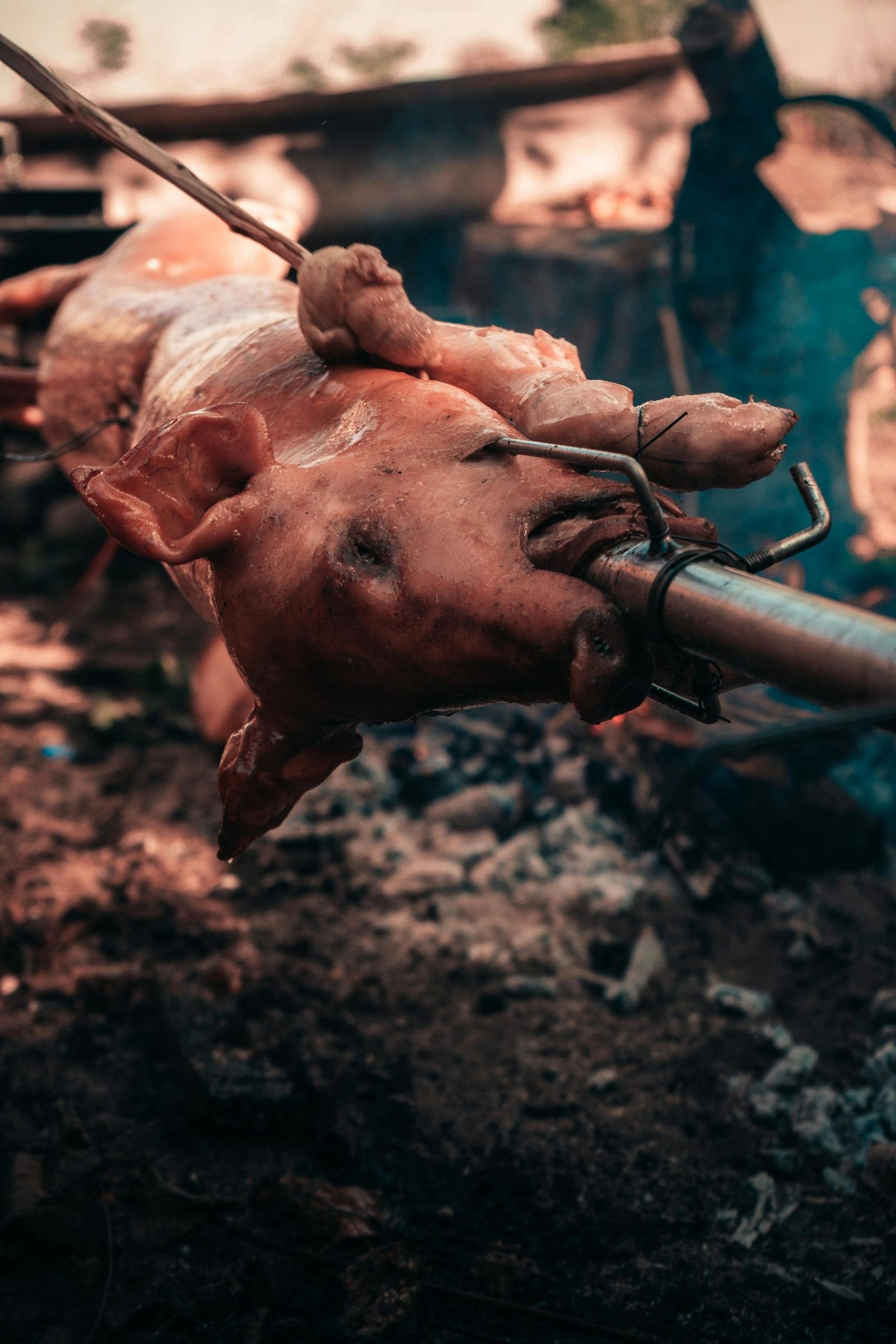Photo by Milan Masnikosa: https://www.pexels.com/photo/a-pig-being-grilled-5802059/
Understanding Filipino Cuisine
Filipino cuisine is a product of the country’s unique historical, cultural, and geographical influences. It blends indigenous flavors with the culinary contributions of colonizers and traders, including the Spanish, Chinese, Malays, and Americans. The result is a rich and diverse cuisine that reflects the country’s multicultural heritage.
Some of the most iconic Filipino dishes include:
- Adobo: A dish made by marinating meat (usually pork or chicken) in soy sauce, vinegar, garlic, and spices, then simmering until tender.
- Sinigang: A tangy and sour soup, often made with pork, shrimp, or fish, and flavored with tamarind.
- Lechon: A whole roasted pig, often considered a centerpiece of Filipino celebrations.
- Kare-Kare: A stew made with oxtail, vegetables, and a rich peanut sauce.
- Halo-Halo: A dessert made with crushed ice, sweetened beans, fruits, jelly, and topped with purple yam (ube) or flan.
Despite the diversity of flavors and dishes, Filipino food has not always received the same level of international attention as other Asian cuisines. So, why the negative perception?
Why Do Some People Criticize Filipino Food?
There are several reasons why Filipino food is sometimes viewed less favorably by travelers and critics:
- Lack of Global Exposure Compared to other Asian cuisines like Thai or Japanese, Filipino food has not been as widely promoted or exported internationally. Filipino restaurants, while growing in number, are less common in major cities worldwide, which means many people have not experienced authentic Filipino cooking. This lack of exposure can contribute to misunderstandings or unfamiliarity with the cuisine’s unique flavors.
- Strong and Unusual Flavors Filipino cuisine is characterized by bold and often contrasting flavors. The combination of salty, sour, and savory can be unusual for those unaccustomed to it. Dishes like balut (a fertilized duck egg), or dinuguan (a savory stew made from pork blood), can be off-putting for those with more conventional tastes, leading to negative first impressions.
- Presentation Filipino food, traditionally served in family-style gatherings, often focuses on taste and nourishment rather than presentation. This can be a stark contrast to the visually stunning plating associated with cuisines like Japanese or Thai. For some critics, this focus on function over form may contribute to a less favorable opinion.
- Regional Variations The Philippines is an archipelago of over 7,000 islands, and regional diversity plays a major role in the variety of Filipino dishes. This means that food from one region might taste completely different from another. Travelers who don’t explore beyond a few regions may miss out on the full breadth of what Filipino cuisine has to offer.
Filipino Food is Gaining Global Attention
While Filipino cuisine has faced its share of criticism, it is important to recognize the growing movement to elevate and promote it on the global stage. Chefs like Margarita Fores and Claude Tayag, as well as popular Filipino-American chefs like Tom Cunanan and Paul Qui, have made strides in introducing Filipino flavors to international audiences. In fact, Filipino food festivals and pop-up restaurants have been popping up in major cities like New York, London, and Sydney, allowing more people to experience authentic Filipino dishes.
Moreover, popular Filipino comfort foods like pancit (noodles), lumpia (spring rolls), and sisig (sizzling chopped pork) are increasingly gaining recognition and appreciation among global food enthusiasts.
Furthermore, Philippines’ very own Jollibee is gaining global attention. Known for its unique fusion of Filipino flavors and Western-style fast food, Jollibee has not only dominated its home market but is also steadily gaining popularity around the world.
The Cultural Context of Filipino Food
To fully appreciate Filipino cuisine, it is essential to understand the cultural significance behind many dishes. Food in the Philippines is often seen as a reflection of community and family. Many Filipino meals are enjoyed in large groups, with dishes served family-style. The flavors of Filipino food, like the use of vinegar in adobo or the sour notes in sinigang, are meant to cater to local tastes and traditions, shaped by centuries of cultural fusion.
Filipino cuisine is also adaptable, with many dishes evolving to suit modern tastes or incorporating local ingredients from different regions. For example, a dish like lechon may vary depending on the region, with some versions stuffed with lemongrass or spices, while others are served with different dipping sauces.
Is It Fair to Call Filipino Food the “Worst”?
The claim that the Philippines has the worst food in Asia is subjective and often influenced by personal biases or limited experiences. Taste is highly individual, and what one person finds unappealing, another may love. It’s also important to consider that Filipino food, like any other cuisine, cannot be judged based on a few dishes or a single experience. Just as people wouldn’t judge all of Italian cuisine based on one poorly made pizza, Filipino food deserves the same open-mindedness and exploration.
Conclusion: The Future of Filipino Cuisine
Rather than being the “worst” in Asia, Filipino cuisine is a complex and culturally rich culinary tradition that has been underappreciated and misunderstood. As more Filipino chefs gain international recognition and more people experience authentic Filipino food, the perception is changing. With its unique flavors, deep cultural roots, and a growing global presence, Filipino cuisine is carving out its rightful place in the diverse tapestry of Asian food.
So, does the Philippines have the worst food in Asia? Absolutely not. It may not yet be as globally popular as other Asian cuisines, but it’s certainly worth exploring for those looking for a unique, flavorful, and culturally rich culinary experience.

